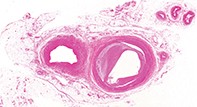Peer Reviewed
Feature Article Cardiovascular medicine
Treatment resistant dyslipidaemia: managing patients who respond poorly to lipid monotherapy
Abstract
When lipid monotherapy fails to control resistant dyslipidaemia, combination therapy should be the next step.
Key Points
- Monotherapy for the treatment of dyslipidaemia can fail for many reasons, including poor patient compliance, the use of an inappropriate agent, side effects, drug interactions and failure to control causative and/or exacerbating factors.
- If a patient’s untreated low-density lipoprotein cholesterol (LDL-C) level exceeds 6 mmol/L, the very low LDL-C targets required for patients at high-risk of cardiovascular disease may be difficult to reach using monotherapy.
- Combination treatments need to be selected on the basis of their synergistic mechanisms and safety profiles.
- Fibrates and fish oil n-3 long-chain fatty acids are considered first-line treatments for hypertriglyceridaemia.
- Predominant hypercholesterolaemia is best treated initially with a statin and if there is a poor response, the addition of either a cholesterol absorption inhibitor or a bile acid sequestering resin may be needed.
- Combination treatment using a statin and either fish oil or fenofibrate is usually required to treat mixed hyperlipidaemia.
Purchase the PDF version of this article
Already a subscriber? Login here.

